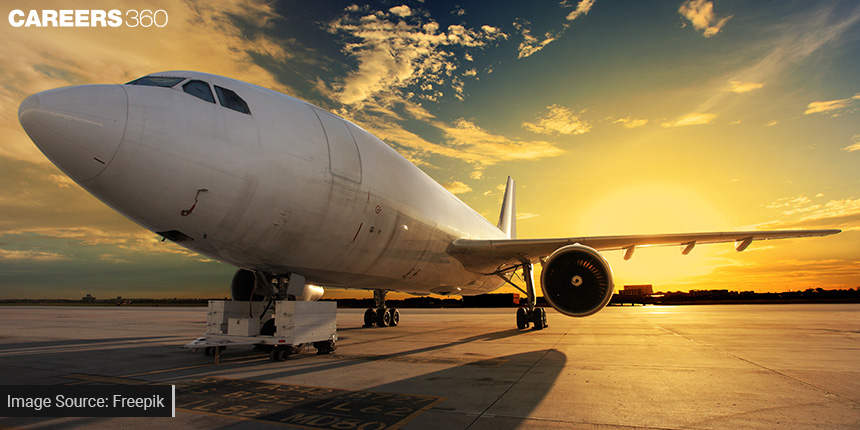Aviation: Analysis Of DGCA’s Pilot Licence Approval Over The Last Six Years
During the two years of Covid pandemic, the mandatory travel restrictions across the world put the aviation industry in a fix. With no travellers and no destinations opening doors for tourism or business there was a big question mark if the sector is going to nosedive like it did after the 2008 global economic crisis. But thanks to the positive trends in other sectors, business and leisure travel is back and the aviation industry seems to be back in business.

There is no doubt that a career in civil aviation has its perks. You get to travel the world, experience different cultures, meet new people almost every day all of this with a good pay package. So when you decide to choose aviation as your career choice you have two options - to become a certified pilot or a cabin crew. Today, we will discuss the certification of a pilot of commercial airlines, government or for corporations.
For our analysis and better understanding of our readers, Careers360 collected data of the last six years from the official website of the Ministry of Civil Aviation and studied the number of licences issued to various pilots. It can be concluded that the number of licences allotted to the pilots have increased over the last six years. Whereas, licences issued to private pilots for aeroplane and helicopter have seen a drop.
Here’s a detailed report of our findings.
Airline Pilots
Pilots have different work profiles. Some want to be commercial pilot, co-pilot, chief pilot, airline pilot, test pilot, defence pilot or drone pilot. All these air pilots need a licence from the Ministry of Aviation.
There are different types of licence provided by the Ministry of Aviation for different types of pilots. Commercial Pilot License (CPL), Air Transport Pilot License (ATPL), Private Pilot License (PPL), are some of the types of licences.
Private Pilot Licence: It allows a pilot to fly a personal flight in a single-engine aeroplane.
Commercial Pilot Licence: It is an advanced version of PPL. The licence enables the candidate to fly an aircraft that is used for commercial purposes.
Air Transport Pilot License: It is the most advanced licence, allowing the pilot to fly both private as well as commercial planes.
Licence Issued In Six Years
The number of pilot licences have increased over the last six years. While the licence for commercial pilots almost doubled, the licence for private pilots decreased more than nine times in six years.
Total No. of Licences Issued
Name of License | 2022-23 | 2017-18 |
Commercial Pilot License (Aeroplane/Helicopter) | 1,165 | 593 |
Air Transport Pilot License (Aeroplane/Helicopter) | 717 | 495 |
Private Pilot License (Aeroplane/Helicopter) | 13 | 124 |
Instrument Rating (Aeroplane/Helicopter) | 2,519 | 580 |
Flight Radio Telephony Operator [FRTOL & FRTOL(R)] | 2,407 | 1,282 |
Flight Aircrew Temporary Authorization (FATA) [Initial + Extension] | 114 | 152 |
Flight Instructor Rating (FIR) | 40 | 14 |
Asstt. Flight Instructor Rating (AFIR) | 84 | 20 |
Also Check- Popular Courses At Film And Television Institute of India, Pune
The Directorate of Training and Licensing is incharge of initial issue of licence as well as conversion of Commercial Pilot License, Air Transport Pilot License, Private Pilot License, Flight Aircrew Temporary Authorisation licences and work related to renewal and endorsement of flight crew licences.
Listed below are the total number of endorsements/ renewals for the period from January 1, 2022 to December 31, 2022
Extension of Aircraft Rating (Endorsements including Open Rating) | 2,903 |
Renewal of Licences and Ratings | 9,254 |
Renewal of English Language Proficiency (ELP) Assessment | 1,744 |
How Can You Become A Pilot?
A simple thing to do is sign up for any of the Undergraduate Airline Pilot Courses as BSc in Aviation, BSc in Aeronautical Science, BE in Aeronautical Engineering, BE in Aerospace Engineering, BTech in Aeronautical Engineering and BTech in Avionics Engineering.
Admission Process
Students aspiring to pursue any of the above courses should fulfil the following requirements:
Aspirants must have completed Class 12 with physics, chemistry, maths.
Have a minimum of an aggregate of 50 per cent from any recognised board.
Along with this, many colleges and universities organise the entrance exams to get admitted. Once the students appear and clear the entrance exams they will be allotted seats based on the merit list. Some of the reputed entrance exams are JEE Main, SRM JEE, JEE Advanced, MHT-CET, VITEEE and IPU-CET.
Add Ons To Catapult Your Career As An Airline Pilot
There are many reputed certificate courses available which help students to become successful pilots. There are also many internships that are available which can give a boost to your career. Some of the reputed certification courses are- Aircraft Stability and Control, IC Engine Calibration using GT-POWER and GT-SUITE, Advanced Aerodynamic Simulations and Understanding and Applying Structural Dynamics: Dynamics and Aerospace Structures Course.
Also check - All India Report On Facilities Provided At Schools Across The Country
Airline Pilot Jobs and Salaries
A pilot who is a fresher, begins his or her career as a co-pilot and then upgrades to being the captain. This career progression requires the candidate to pass various tests. The average salary of various pilot are mentioned below.
Salary In Lakh Per Annum
Job Profile | Average Salary |
Co-Pilot | 10-12 |
Private Jet Pilot | 40-50 |
Commercial Pilot | 12-16 |
Air Force Pilot | 12-15 |
Commuter Pilot | 16-18 |
Flight Instructors | 32-35 |
Experimental Test Pilot | 8-10 |
Articles
Upcoming Exams
Application Date:05 September,2024 - 25 November,2024
Application Date:15 October,2024 - 15 January,2025
Application Date:10 November,2024 - 08 April,2025